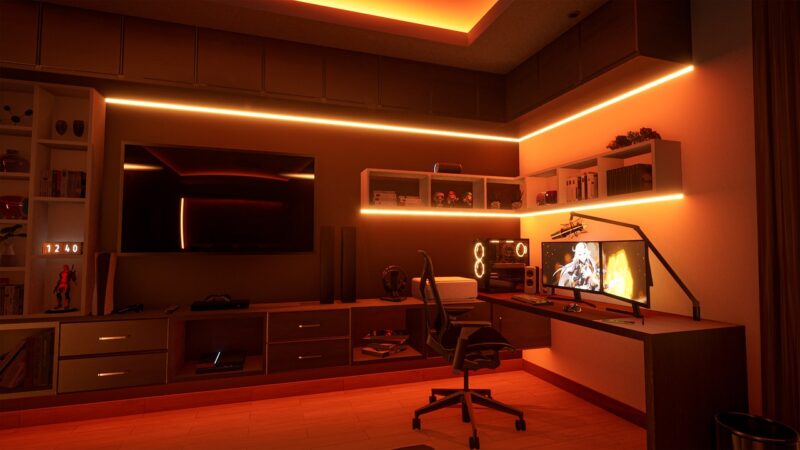
Creating a dedicated listening room can dramatically enhance your audio experience, whether you are an audiophile, a music lover, or simply someone who appreciates high-quality sound. With the right setup, you can transform a regular space into an acoustically optimized haven that treats your ears to rich, immersive sound.
In this comprehensive guide, we will explore the steps to set up your own listening room, including room selection, acoustic treatment, speaker placement, and equipment choices.
1. Choosing the Right Room
The first step in creating your ultimate listening room is selecting the right space. Here are some factors to consider:
- Room Size: A larger room may allow for better sound distribution, but it can also introduce challenges like echoes. Small to medium-sized rooms are often easier to control acoustically.
- Shape: Rectangular rooms are generally preferred over square ones. Avoid odd-shaped rooms or those with alcoves that might disrupt sound flow.
- Flooring: Hard surfaces amplify sound, while carpets and rugs can reduce reflections and help with acoustics. Choose a room that allows you flexibility with flooring options.
- Isolation: If possible, select a room away from noise sources like street traffic, pets, or other household activities. A quiet environment is crucial for discerning subtle sounds in music and audio tracks.
By choosing a suitable space, you lay the foundation for an incredible listening experience.
2. Acoustic Treatment: Optimize Sound Quality
Acoustic treatment is essential for controlling how sound behaves in your listening room. Here are some strategies to improve the acoustics:
- Bass Traps: Place bass traps in the corners of the room to absorb low frequencies and reduce booming sounds. This will provide a balanced bass response and prevent muddiness in the audio performance.
- Diffusers: Use diffusers to scatter sound waves, preventing echoes that can disrupt clarity. Place them on the rear and side walls for a more spacious sound environment.
- Acoustic Panels: Install acoustic panels on primary reflection points (like the front wall and side walls) to absorb mid and high frequencies. This helps reduce reflection and creates a clearer stereo image.
- Ceiling Treatment: Consider adding panels or clouds to the ceiling to further enhance sound quality. The ceiling can greatly affect how sound waves disperse in the room.
- Windows and Doors: Use heavy curtains or specialized window plugs to limit outside noise and reflections. Ensure the door can also close tightly to avoid sound leakage during listening sessions.
With effective acoustic treatment, your listening room will become an ideal space for high-fidelity sound.
3. Speaker Placement: Position for Perfection
Where you place your speakers in the room can significantly impact the audio experience. Follow these guidelines for optimal speaker placement:
- Distance from Walls: Ideally, place your speakers at least 12-18 inches away from the walls to minimize reflections that can muddy the sound. This will also allow for deeper bass reproduction.
- Triangle Formation: Arrange your speakers and listening position in a triangle configuration. The distance between the speakers should be equal to the distance from the listening position for balanced sound propagation.
- Angle of Speakers: Slightly angle the speakers toward the listening position (about 15-30 degrees) for the best stereo imaging and clearer sound spatialization.
- Height: Position the speakers so that the tweeters (high-frequency drivers) are at ear level when seated. This enhances clarity and improves overall sound perception.
Room acoustics, speaker placement, and listener position create a synergistic effect that can elevate your listening experience.
4. Equipment Choices: The Heart of Your Setup
Selecting the right audio equipment is crucial for achieving the best sound quality. Here are some components you should consider:
- Speakers: Invest in high-quality speakers that fit the size of your room and match your audio preferences. Bookshelf speakers are excellent for small to medium rooms, while floor-standing speakers can deliver deeper bass in larger spaces.
- Amplifiers: A robust amplifier will ensure that your speakers receive the power they need to perform at their best without distortion. Match the amplifier specifications with your speakers to achieve optimal performance.
- Source Components: Consider using high-resolution digital sources like a quality CD player or digital streaming service to feed your audio system. Ensure that your source components support the highest audio fidelity available.
- Cables: Don’t overlook the importance of cables in your system. Use high-quality speaker wire and interconnects for the best signal transfer, as poor cables can diminish sound quality.
By investing in the right equipment and ensuring compatibility within your system, you set the stage for the ultimate listening experience.
5. Testing and Tweaking: Fine-Tuning Your Setup
Once everything is set up, it’s time to listen and make adjustments:
- Initial Listening Tests: Play a variety of music genres to assess the sound quality. Take note of areas that need improvement, like harshness or muddiness in certain frequencies.
- Room Adjustment: Don’t hesitate to move furniture, swap speaker positions, or add/remove acoustic treatment as needed. Sometimes small changes can make a significant difference in sound quality.
- Use Tools: Consider software or apps that analyze room acoustics and assist with speaker placement. These tools can provide valuable feedback to enhance your audio experience.
Acoustic optimization is an ongoing process. Regularly revisit your setup and adjust as necessary to maintain an incredible sound experience.
Conclusion
Creating your own listening room can be a rewarding project that maximizes your enjoyment of music and audio content. By carefully selecting the right room, optimizing acoustics, positioning your speakers, and investing in quality equipment, you can transform an ordinary space into a breathtaking auditory haven.
Remember that the key to a successful listening room lies in patience and fine-tuning. Enjoy the journey of discovering what sounds best to you, and embrace the incredible world of sound that awaits you in your own dedicated space.







